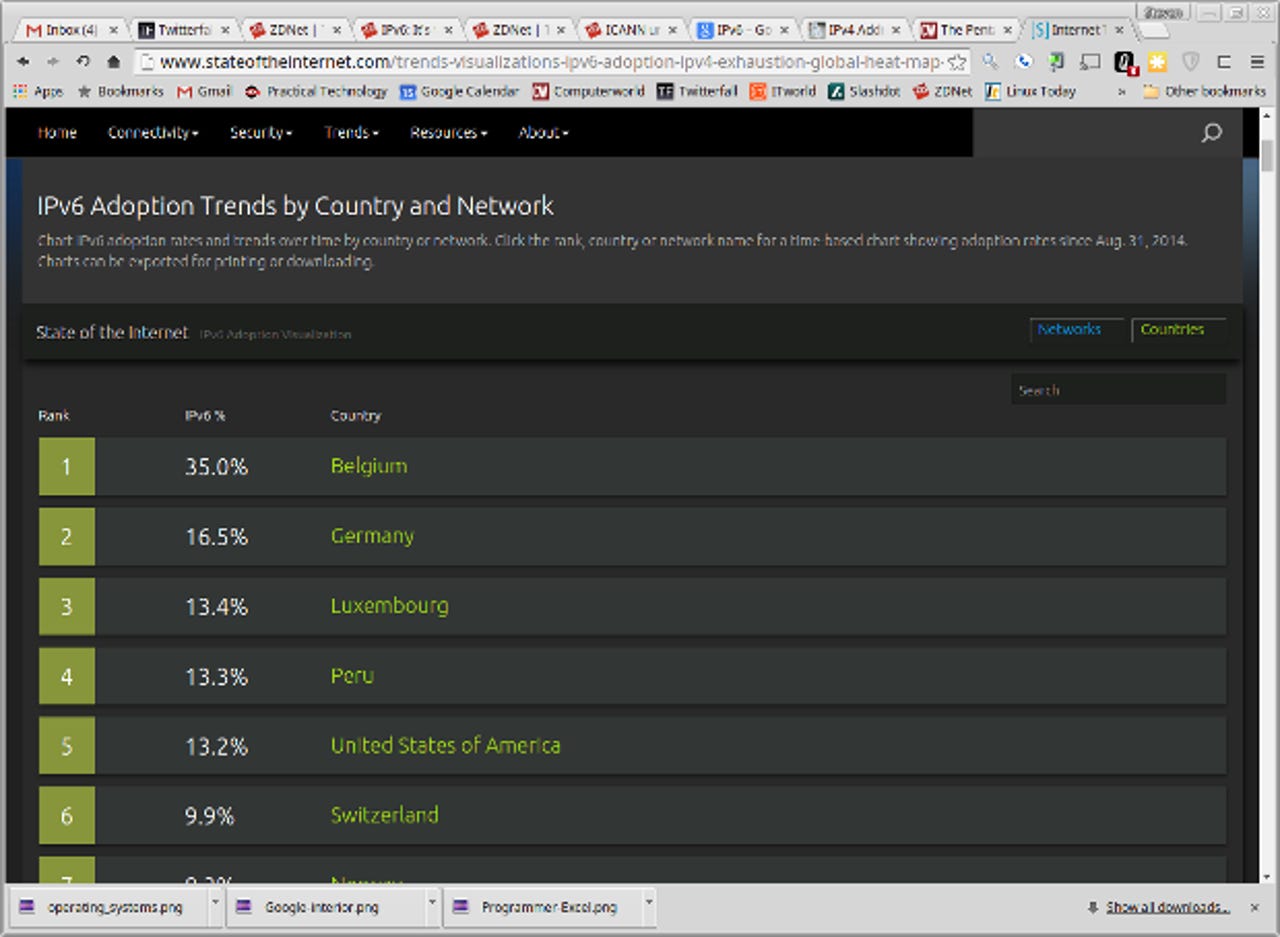How much is that Internet address in the window?

You'd think by now with the last IPv4 Internet addresses disappearing, we'd all be well on our way to using IPv6 addresses. You'd be wrong. So, it is that there's now a growing market for IPv4 addresses.

So, have we been moving to the almost limitless IPv6 address space with its 128-bit address space, which has 2^128 addresses or 40,282,366,920 billion, billion, billion usable addresses? No, not really.
Oh, we've been getting better. According to the latest Google statistics, we're up to a whopping 6.11 percent IPv6 usage. By Akamai's State of the Internet count, the United States is doing better than that with 13.2 percent. Much of that growth has come not from conventional ISPs, but from mobile ISPs -- and Verizon Wireless in particular. Verizon saw earlier than most that IPv6 was a necessity and not an option. By 2014, over half of Verizon Wireless customers were using Ipv6 and almost 30 percent of T-Mobile users were on IPv6.
Meanwhile, in the conventional business and government Internet world, IPv6 adoption is still lagging. The US Department of Defense (DoD), for example, proved that IPv6 would work in 2008... and in 2015 the DoD Inspector General announced that the department had failed to migrate to IPv6.
So, what are people doing instead of switching to IPv6? As I'd predicted in 2012, they're buying "old" IPv4 addresses. There is now a flourishing IPv4 resale market.
According to Dyn Research's Director of Internet Analysis, Doug Madory, the IPv4 address market has taken off since the first such firm, Addrex, opened its virtual doors. Today, there are more than two dozen IPv4 address brokers.
Business is booming for the companies. By Dyn Research's count, "February 2015 saw the most organizational transfers, 373, while November 2014 saw the most unique address transfers, nearly 2 million."
These addresses are coming from a variety of sources. In the European and Middle East Internet address area, managed by Réseaux IP Européens Network Coordination Centre (RIPE NCC), Romania ISPs, particularly Jump.ro, are selling the most addresses. These are going for about $10 per address. That may not sound like much. But as Dyn Research pointed out, Saudi Telecom -- Saudi Arabia's main ISP -- "spent $15 million - a non-trivial amount of money," since last fall.
Akamai's latest State of the Internet Report reported that "fourth-quarter transfers of IPv4 address space within the ARIN region went for anywhere between $8.00 to $13.57 per address, with listed address block sizes ranging from a /24 to a /20" subnets.
In short, instead of moving to IPv6 Internet addressing, people are willing to pay good money to stay with the old IPv4 address scheme. Madory asked: "Now that the Romanians have demonstrated that there is lucrative business to be had in selling off IPv4 address space, will we see ISPs in developing countries rush to sell off their address space for some quick cash?"
The answer seems to be yes. In the end, while "IPv6 address space is effectively free and infinite," more and more organizations are apparently now paying large sums to continue to acquire IPv4 addresses."
This simply isn't sustainable. Besides the growth of the "old" Internet of PCs and servers, mobile devices have accelerated the decline of IPv4 addresses. With the rise of the Internet of Things, by the end of the decade, large quantities of IPv4 addresses simply won't be available at any cost.
Like it or lump it, your business must start moving to IPv6.
Related Stories: